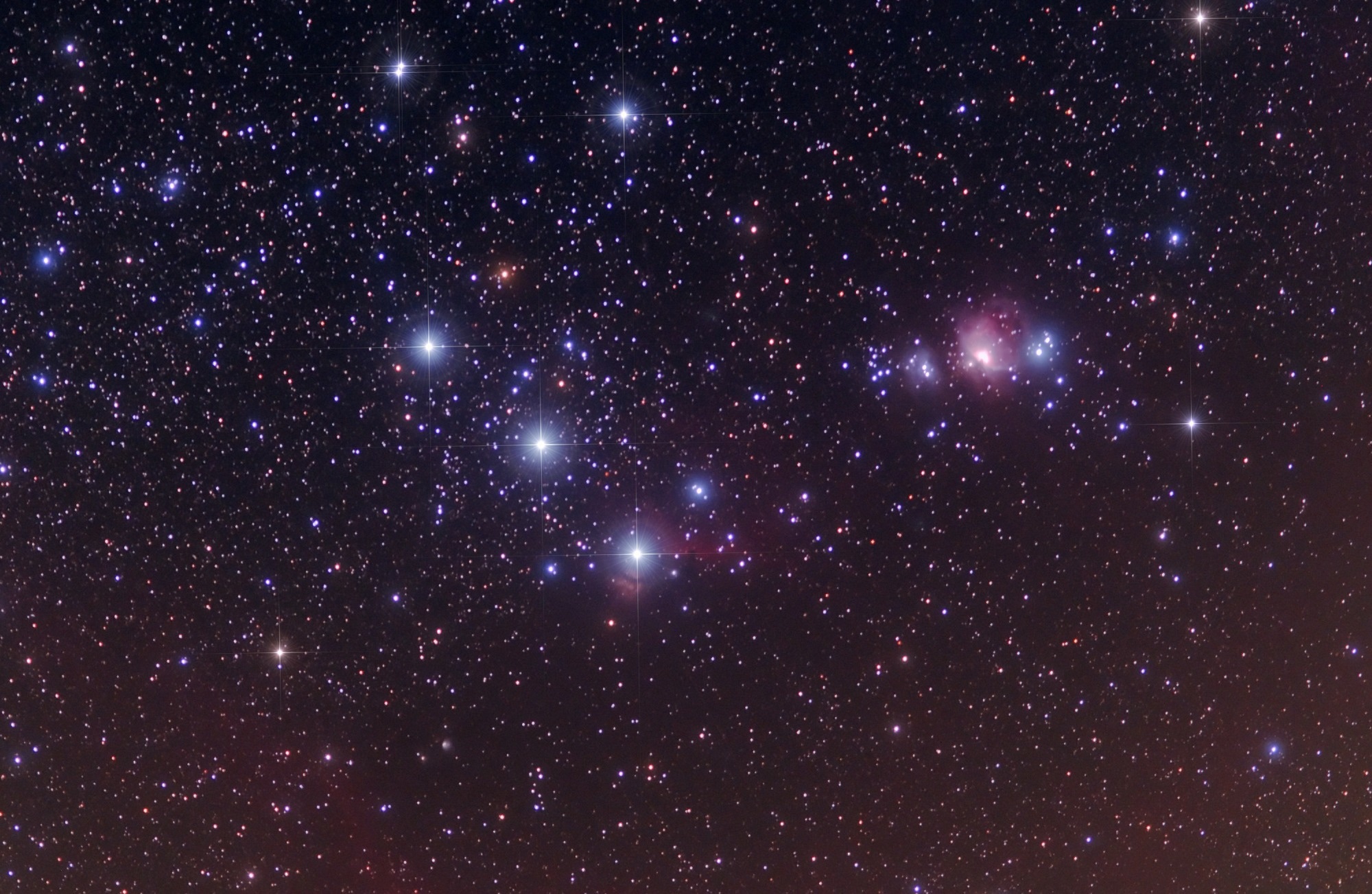Reviewed by Mila PereraSep 8 2022
The most complete and accurate photographs of the region where the famous constellation of Orion is bombarded with ultraviolet (UV) radiation from massive young stars have been taken by astronomers using the W. M. Keck Observatory on Hawaii Island from Maunakea.

Image Credit: Shutterstock.com/PlanilAstro
The Orion Bar, a star-forming region in the center of Orion's “sword”, contains a radioactive neutral zone, known as a Photo-Dissociation Region (PDR).
The stunning nebula is frequently mistaken for one of the constellation’s stars when seen with the naked eye, but when examined via a telescope, it is revealed to be a brilliant, gaseous stellar nursery 1,350 light-years away from Earth.
It was thrilling being the first, together with my colleagues of the ‘PDRs4All’ James Webb Space Telescope team, to see the sharpest images of the Orion Bar ever taken in the near infrared.
Carlos Alvarez, Study Co-Author and Staff Astronomer, Keck Observatory
Studying the Orion Nebula’s PDR, or the region heated by starlight, is an excellent way to learn how stars and planets are formed since it is our closest massive star formation region and could be similar to the environment in which our solar system was created.
Observing photo-dissociation regions is like looking into our past. These regions are important because they allow us to understand how young stars influence the gas and dust cloud they are born in, particularly sites where stars, like the Sun, form.
Emilie Habart, Study Lead Author and Associate Professor, Institut d’Astrophysique Spatiale, Paris-Saclay University
The study is available in preprint form on arXiv.org and has been approved for publication in the journal Astronomy & Astrophysics.
The James Webb Space Telescope (JWST) Early Release Science (ERS) program PDRs4All: Radiative feedback of massive stars (ID1288) has benefited from these pathfinder observations. In a paper released in the Publications of the Astronomical Society of the Pacific, Berné, Habart, Peeters, et al. (2022) describe the PDRs4All program.
Methodology
The PDRs4All team utilized the Keck Observatory’s second-generation Near-Infrared Camera (NIRC2) and the Keck II telescope’s adaptive optics technology to examine Orion’s PDR.
Due to extensive analysis, researchers were able to distinguish and spatially resolve various substructures of the Orion Bar, such as globules, ridges, filaments, and proplyds (externally illuminated photoevaporating discs around young stars), which were created as starlight blasted and sculpted the nebula’s mixture of dust and gas.
Habart stated, “Never before have we been able to observe at a small scale how interstellar matter structures depend on their environments; particularly how planetary systems could form in environments strongly irradiated by massive stars. This may allow us to better understand the heritage of the interstellar medium in planetary systems, namely our origins.”
Massive young stars release a lot of UV radiation, which affects the physics and chemistry of their immediate surroundings. It is presently unclear how this burst of energy injected by stars into their native cloud affects and molds star formation.
Astronomers’ understanding of this process will be strengthened by the new Keck Observatory images of the Orion Bar, which show precisely where gas in the PDR shifts from hot ionized to warm atomic and cold molecular. Since the dense, cold molecular gas is an essential fuel for star formation, mapping this conversion is crucial.
What is Next
The Orion Bar is one of JWST’s priorities, with observation anticipated in the following weeks. These recent observations from Keck Observatory have influenced plans for JWST observations of the Orion Bar.
“One of the most exciting aspects of this work is seeing Keck play a fundamental role in the JWST era. JWST will be able to dive deeper into the Orion Bar and other PDRs, and Keck will be instrumental in validating JWST’s early science results. Together, the two telescopes can provide unique insight into the characteristics of the gas and chemical composition of PDRs, which will help us understand the nature of these fascinating star-blasted regions,” concluded Alvarez.
Journal Reference:
Habart, E., et al. (2022) High angular resolution near-IR view of the Orion Bar revealed by Keck/NIRC2. Astronomy & Astrophysics. arXiv:2206.08245v1 [astro-ph.GA]